How to Grow Critical Kush Strain
Growing Critical Kush is an art, blending skill and knowledge. Known for high THC and unique flavors, this strain challenges but rewards growers. This guide covers all about cultivating Critical Kush, from genetics to indoor and outdoor growing.
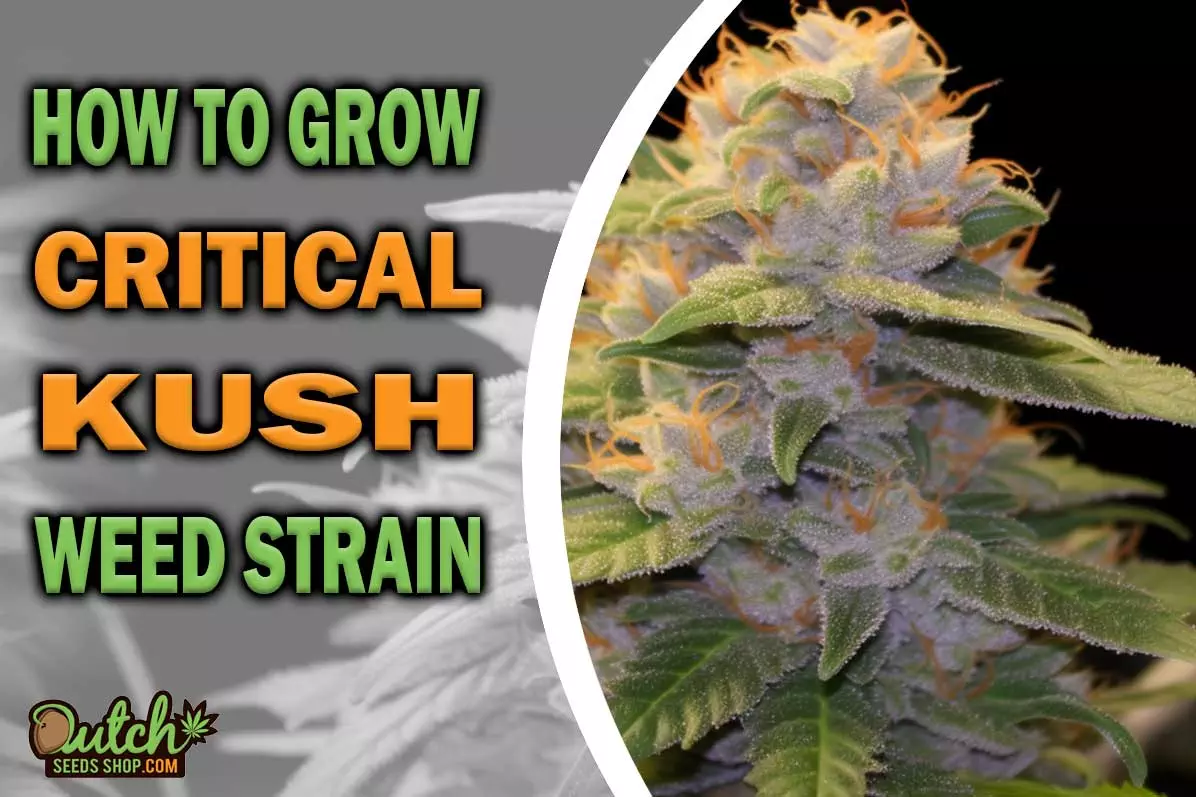
Get To Know Critical Kush Strain
Critical Kush, a blend of Critical Mass and OG Kush, boasts a 90% Indica dominance.
Its THC levels range impressively from 19% to 25%, while CBD remains below 0.1%.
The strain is celebrated for its potent physical effects and long-lasting relaxation, making it ideal for pain relief and stress alleviation.
| Aspect | Details |
| Lineage | Critical Mass, OG Kush |
| THC/CBD Content | 19%-25% THC, <0.1% CBD |
| Flavors | Citrus, Sweet, Pine, Tangy |
| Effects | Relaxing, Stress-Relief, Strong |
| Grow Difficulty | Moderate |
| Flowering Time | 56 to 60 days |
| Yield | 1.6-1.8 oz/ft² (indoor), 17-19 oz/plant (outdoor) |
Tips and Tricks for Growing Critical Kush Successfully
Critical Kush demands a warm climate and meticulous care.
Its moderate difficulty level means that both beginners and experts can cultivate it.
Here are key points for a successful grow:
- Seed Selection: Opt for feminized seeds to ensure flowering.
- Cloning: Consider clones for a consistent phenotype.
- Accessories: Invest in quality grow lights and proper ventilation.
Critical Kush Indoor Growing
Growing Critical Kush seeds indoors is both a science and an art, requiring understanding of the plant’s needs and the ability to control environmental factors.
This strain’s distinctive characteristics, such as its potent effects and tantalizing flavors, make it a rewarding but challenging plant to grow inside.
Critical Kush’s moderate grow difficulty implies that while it’s not the simplest strain to cultivate indoors, it’s certainly achievable with the right knowledge and tools.
Benefits of Indoor Growing
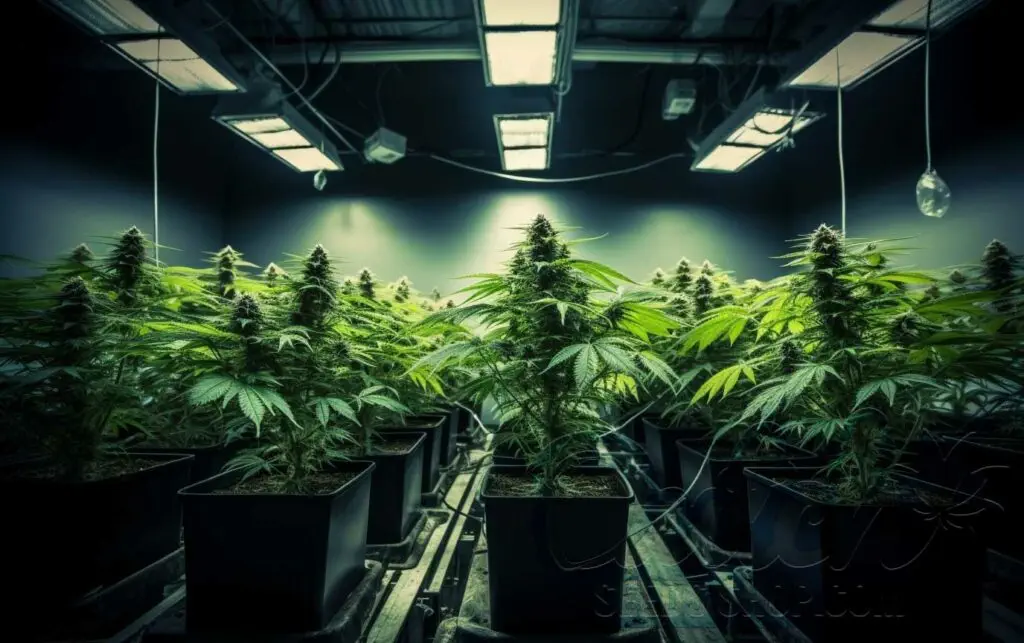
The indoor cultivation of Critical Kush comes with several advantages.
Firstly, it allows growers to produce high-quality cannabis with dense, resinous buds.
The controlled environment indoors leads to fewer pests and diseases, directly influencing the quality of the yield.
Moreover, indoor growing enables multiple harvests throughout the year, regardless of external weather conditions.
This is particularly beneficial for Critical Kush, which thrives in stable environments.
The adaptability to control factors like light, temperature, and humidity ensures each plant reaches its full potential.
Privacy and security are other notable benefits, as indoor grows are less visible and more protected from external threats.
- High-quality yield
- Multiple harvests
- Control over growing conditions
- Enhanced privacy and security
Setting Up Your Indoor Grow Space
To successfully grow Critical Kush indoors, start by selecting the right space.
This could be a closet, grow tent, or spare room.
Critical considerations include adequate space for plant growth and a location that can be sealed off from external light.
Proper ventilation is crucial to control odor and humidity.
Grow lights are a significant aspect; choose between HID, LED, or fluorescent based on your setup and budget.
Managing costs is also important, particularly when starting small.
Remember, the initial setup cost can be offset by the high-quality yield of the Critical Kush strain.
- Choose the right space.
- Ensure proper ventilation.
- Select suitable grow lights.
- Manage your budget effectively.
Climate Control
For Critical Kush, maintaining an optimal indoor climate is essential.
Temperature and humidity need to be closely monitored and regulated.
Environmental controllers or timers can automate this process.
Air-cooled reflector hoods are beneficial for HID lights to manage heat.
Oscillating fans improve air circulation, ensuring a stable environment.
Adjusting these variables as needed helps avoid stress on the plants, leading to a healthier grow and a more potent yield.
Types of Lights
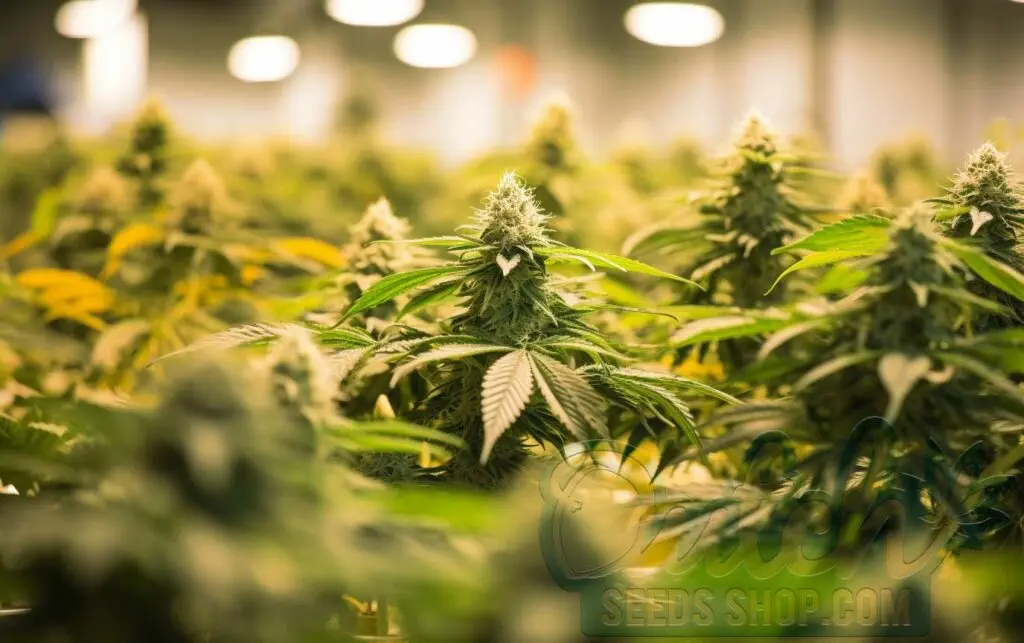
Different grow lights affect the Critical Kush strain in unique ways.
HID lights, like Metal Halide (MH) for vegetative growth and High-Pressure Sodium (HPS) for flowering, are traditional but require more energy.
Fluorescent lights are suitable for smaller setups.
LED lights are energy-efficient and offer a broader light spectrum, which can be particularly beneficial for the flowering stage of Critical Kush.
Choosing the right light type is essential for optimizing growth and maximizing yield.
- HID: MH and HPS
- Fluorescent
- LED: Energy-efficient with a broad spectrum
Growing Mediums and Containers
When it comes to mediums, soil is traditional and forgiving, especially for beginners.
However, hydroponics can lead to faster growth and bigger yields but requires more expertise.
For containers, plastic pots are economical, while fabric containers promote better root health.
Ensuring proper drainage is critical to prevent root rot, a common problem in improperly managed setups.
Caring for Indoor-Grown Critical Kush
Care routines for Critical Kush include daily checks, especially in the early stages.
Adjust temperature, humidity, and light levels as needed.
Watering should be regular but not excessive, with pH-balanced water.
Nutrient levels must be closely monitored, supplementing as required.
Pruning helps control the size and promotes better yields.
Watch for early signs of pests or diseases and combat them promptly.
Odor Control
Managing the intense aroma of Critical Kush is a significant aspect of indoor growing.
Techniques include maintaining optimal temperature and humidity, ensuring good air circulation with exhaust and intake fans, and using activated carbon filters.
Odor-absorbing gels can also help mask the smell.
Critical Kush Outdoor Growing
Outdoor cultivation of Critical Kush offers a different set of challenges and rewards compared to indoor growing.
It allows the plants to grow in a more natural environment, harnessing the power of the sun and natural elements.
This approach requires a good understanding of the local climate and an ability to adapt to its variability.
Benefits of Outdoor Growing
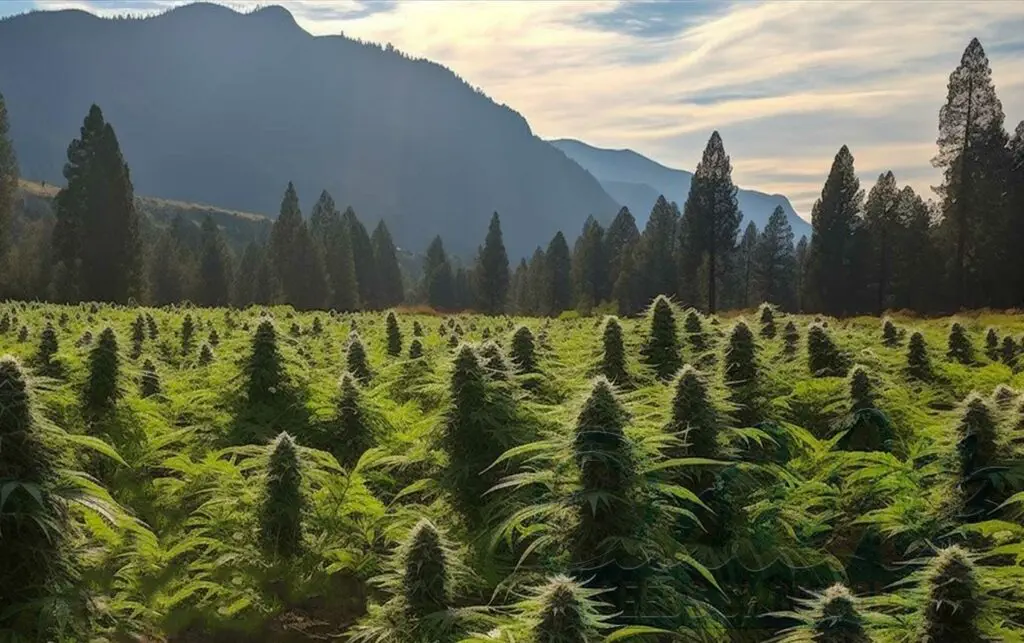
Growing Critical Kush strain outdoors has distinct advantages.
The cost-effectiveness of this method is significant, as it reduces the need for expensive lighting and climate control systems.
Larger yields are often achievable due to more space and natural resources.
Environmental sustainability is another key benefit, as this method relies less on artificial inputs.
Additionally, the therapeutic aspects of gardening, such as the connection to nature and the physical activity involved, can be mentally and physically rewarding.
| Benefit | Description |
| Cost-Effectiveness | Reduces need for expensive equipment |
| Larger Yields | More space and resources for plant growth |
| Environmental Sustainability | Relies on natural sunlight and resources |
| Therapeutic | Offers mental and physical health benefits |
Best Time to Plant Critical Kush Outdoors
Timing is crucial when planting Critical Kush outdoors.
In the Northern Hemisphere, the best time is generally April or May, depending on the local climate.
Start by germinating seeds or growing seedlings indoors to protect them from late frosts.
Once the outdoor temperatures are consistently warm, transplant the seedlings to your outdoor grow space.
Setting Up Outdoor Grow Spaces
To set up an outdoor grow space for Critical Kush, first, understand your local climate and its impact on cannabis.
Choose a location that receives at least six hours of direct sunlight daily.
Protect your plants from excessive wind and ensure privacy if required by local laws.
Different setups can be used, including garden plots, balconies, or rooftops.
- Understand local climate.
- Ensure adequate sunlight.
- Protect plants from wind.
- Choose appropriate grow space.
Selecting and Preparing Soil
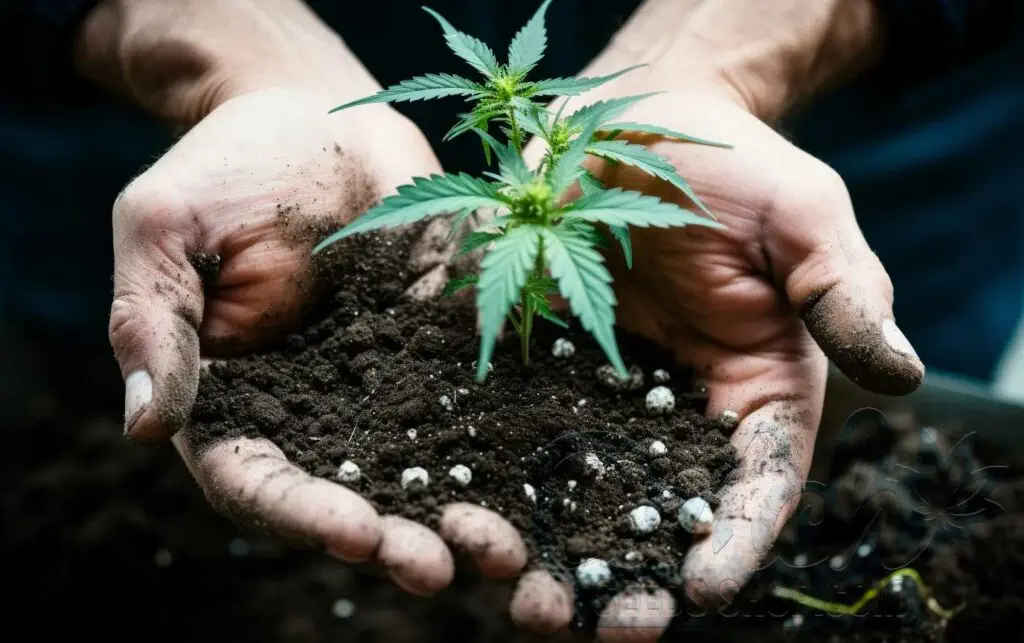
Soil quality is paramount for successful outdoor cultivation of Critical Kush.
Test your soil to understand its composition and amend it as needed.
The ideal soil for cannabis is loamy, well-draining, and rich in organic matter.
If your natural soil is not suitable, consider buying quality potting soil or pre-fertilized “super-soil” for easier management.
Nutrients and Fertilizers
Nutrient management is crucial for Critical Kush grown outdoors.
Use a balanced mix of nitrogen, phosphorus, and potassium throughout its life cycle.
Organic fertilizers like blood meal or bone meal can be beneficial, but synthetic options are also available.
Regular irrigation and a well-planned nutrient schedule can significantly improve yields.
- Nitrogen, Phosphorus, Potassium
- Organic vs. Synthetic Fertilizers
- Regular Irrigation
- Nutrient Schedule
How to Maximize Critical Kush Yield
To maximize the yield of Critical Kush, both indoors and outdoors, consider advanced cultivation techniques.
Training methods like topping or low-stress training can promote more robust growth.
Pay attention to factors like CO2 enrichment and light intensity, which can significantly boost plant health and yield.
These techniques require more attention and knowledge but can lead to impressive results.
Mastering the cultivation of Critical Kush is a journey filled with intricacies but rewarding in its own right.
This strain, with its potent effects and rich, aromatic flavors, offers a unique growing experience.
It challenges growers to fine-tune their skills in climate control, nutrient management, and pest prevention, whether grown indoors or outdoors.
The rewards of cultivating Critical Kush are not just in its generous yields and high THC content but also in the deeper understanding and connection to the art of cannabis cultivation.
The satisfaction of nurturing this strain from seed to harvest and enjoying its high-quality buds makes the effort and dedication worthwhile.
For cannabis enthusiasts and cultivators alike, mastering Critical Kush is a fulfilling endeavor that enhances both horticultural skills and cannabis appreciation.
FAQ
Can Critical Kush be grown in colder climates?
Critical Kush prefers warm climates. However, it can be grown in colder climates if proper precautions are taken, such as using a greenhouse to maintain a stable, warm environment.
How often should Critical Kush be watered?
Watering frequency depends on the growth stage and environment. Generally, water when the top inch of soil is dry.
What are the common pests that affect Critical Kush?
Critical Kush is susceptible to common cannabis pests like spider mites, aphids, and caterpillars.
Can Critical Kush be grown using aeroponics?
Yes, Critical Kush can be grown using aeroponics, though it’s a more advanced method.
Is it necessary to prune Critical Kush plants?
Pruning is beneficial for Critical Kush, especially to remove lower growth that doesn’t receive much light.
About the Author
Share the Love:
